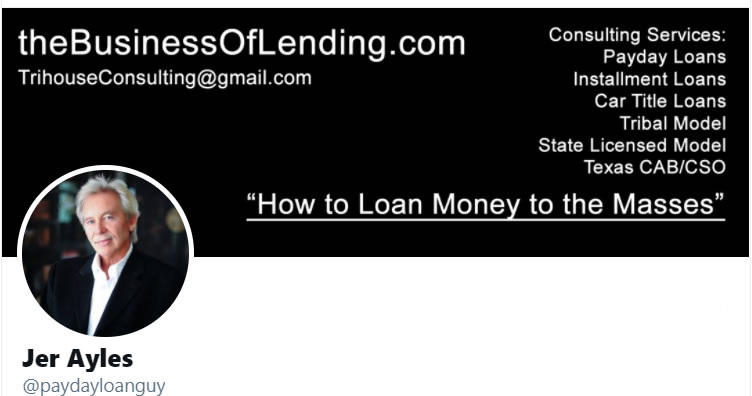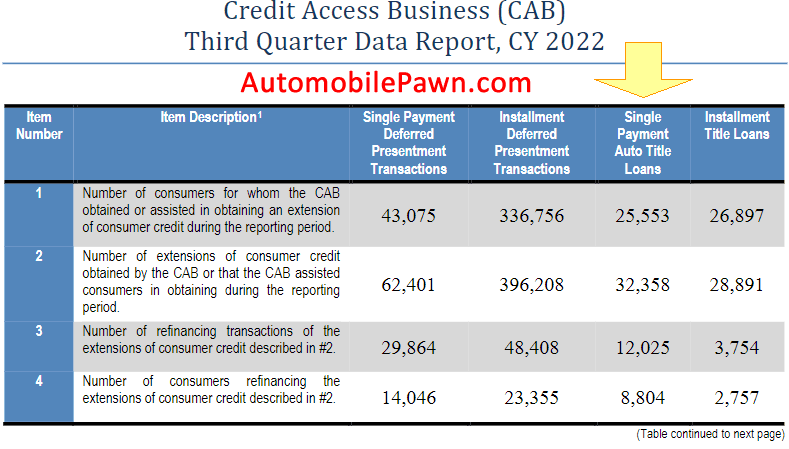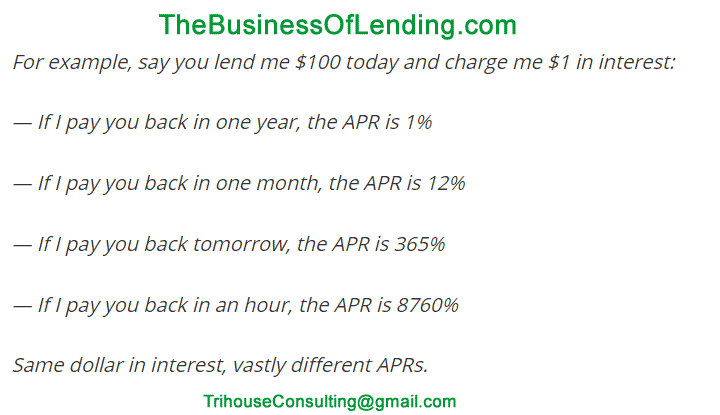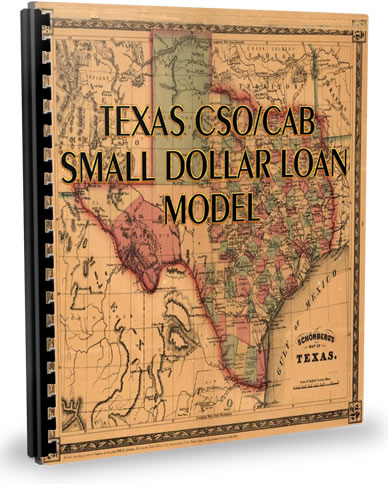
Subprime Loans in Storefront Environments?
Dinosaurs or here to stay?
Studies suggest that consumers may prefer applying for small-dollar loans with their phone rather than in a face-to-face meeting in a storefront environment.
Is this true?
Are B2C loan stores going the way of dinosaurs?
The shift towards digital platforms for small dollar loans is indeed a significant trend in the consumer lending industry.
This preference for mobile applications over in-person, storefront interactions is influenced by several factors:
Convenience: Using a phone to apply for a loan is highly convenient. Consumers can complete the entire process from anywhere, at any time, without the need to travel to a physical location.
Speed and Efficiency: Mobile applications often provide quicker responses and faster processing times, which is particularly appealing for those seeking small, short-term loans.
Privacy and Comfort: Applying for a loan via a phone offers a level of privacy that might not be present in a storefront environment. This can be especially important for individuals who are sensitive about discussing their financial situations in person.
Technological Advancements: The rise of fintech has made online transactions more secure and user-friendly, encouraging more consumers to use digital platforms for financial services.
Changing Consumer Preferences: Younger generations, who are generally more tech-savvy and reliant on their smartphones for various services, might be more inclined to use digital channels for their financial needs.
Despite these trends, it’s not accurate to say that loan stores are going the way of dinosaurs just yet.
There are still significant segments of the population that prefer or rely on in-person services due to various reasons:
Digital Divide: Not everyone has access to or is comfortable with technology. Some consumers, particularly in older demographics, prefer face-to-face interactions.
Complex Financial Situations: Certain customers may require more detailed advice or have complex situations that are better handled in person.
Trust and Relationship Building: Physical locations can offer a sense of legitimacy and trust that some consumers still value, especially when dealing with sensitive financial matters.
Immediate Cash Disbursement: Storefronts can offer immediate cash disbursement, which might not be possible with online loans.
Regulatory Landscape: Depending on the region, there might be regulations that favor or require certain financial transactions to be conducted in person.
So, while there’s a clear trend towards digital platforms for small-dollar loans, storefront loan services still have a role to play.
The future of our industry is likely to be a hybrid model that combines the convenience of digital services with the personalized touch of in-person interactions.
Businesses in this sector need to adapt to changing consumer preferences while recognizing the continued importance of face-to-face services for certain customer segments.

Here are 10 powerful tactics for enhancing in-person loan services, each expanded with details on implementation and benefits:
Personalized Customer Greetings:
- Train staff to greet customers by name and with a personalized approach, making them feel valued and recognized.
- Builds a more personal connection and improves customer experience.
In-Depth Financial Consultations:
- Offer comprehensive financial consultations to understand customer needs and provide tailored loan solutions.
- Helps in building trust and ensuring customers get the loan product that best fits their situation.
Real-Time Loan Customization:
- Equip staff with tools and authority to make on-the-spot loan adjustments based on customer feedback and needs.
- Enhances customer satisfaction through flexibility and responsiveness.
Interactive Educational Resources:
- Provide educational materials and interactive tools in the storefront to help customers understand loan products and financial management.
- Empowers customers to make informed decisions and promotes financial literacy.
Streamlined Paperwork Process:
- Simplify and expedite the loan application and paperwork process with efficient systems and clear guidance.
- Reduces customer frustration and improves the overall loan application experience.
Follow-up Services and Check-ins:
- Implement a system for follow-up services, such as regular check-ins on loan status and customer satisfaction.
- Encourages customer loyalty and shows commitment to their financial well-being.
Transparent Communication:
- Maintain clear, honest, and open communication about loan terms, conditions, and changes.
- Builds trust and reduces the risk of misunderstandings or customer dissatisfaction.
Comfortable and Welcoming Environment:
- Design the storefront to be inviting and comfortable, making the loan discussion process more pleasant.
- A welcoming environment can ease customer anxiety and enhance the overall experience.
Efficient Problem Resolution:
- Train staff in effective problem-solving techniques to promptly address customer concerns or issues.
- Quick and efficient problem resolution can significantly boost customer confidence and loyalty.
On-the-Spot Loan Adjustments
Description
This service involves providing immediate adjustments or modifications to a loan agreement while the customer is present in the storefront. It could include changing the loan amount, altering repayment schedules, or modifying interest rates based on real-time discussions and assessments.
Expanded Pros
Immediate Resolution of Issues or Changes:
- Allows for quick adaptation to the customer’s changing financial circumstances, like sudden expenses or changes in income.
- Reduces the time and bureaucratic hurdles typically associated with loan modifications, leading to faster service delivery.
Enhanced Customer Satisfaction:
- Personalized service can strengthen the customer relationship, as clients feel their needs are being directly addressed.
- Helps in building trust and loyalty, as customers appreciate the flexibility and responsiveness of the service.
Expanded Cons
Challenges in Managing Complex Loan Structures:
- Complex loans require careful handling, like those with variable interest rates or unconventional repayment terms. Adjustments in such cases can be intricate and time-consuming.
- The risk of errors or oversight increases with the complexity of the loan, necessitating a thorough review process, which might be challenging in a real-time setting.
Need for Empowered and Knowledgeable Staff On-Site:
- Staff must deeply understand financial products, regulatory compliance, and the business’s risk policies to make informed decisions.
- Empowering frontline employees to make such decisions requires significant training and trust alongside systems that support quick access to relevant customer and product information.
- There’s also a need for a robust internal control system to ensure that on-the-spot adjustments are made within the business’s risk appetite and compliance framework.
Additional Considerations
- Technology Integration: Utilizing advanced software that can instantly calculate and present the implications of loan adjustments can aid in reducing errors and enhancing efficiency.
- Customer Education: Clearly explaining the implications of any adjustments to the customer is crucial to ensure they make informed decisions and understand the changes to their loan terms.
- Regulatory Compliance: The business must ensure that all on-the-spot adjustments comply with lending laws and regulations, which may vary based on the jurisdiction.
Offering on-the-spot loan adjustments can significantly enhance customer experience and operational flexibility, but it requires well-trained staff, robust systems, and a careful balance of responsiveness and compliance.
Community Engagement and Awareness:
- Engage with the local community through events or partnerships, raising awareness about your services and building a positive brand image.
- Helps in attracting new customers and solidifying your presence in the local market.
Each tactic focuses on enhancing the customer experience, building trust, and ensuring that the services provided are efficient and tailored to meet each customer’s unique needs. Implementing these strategies can lead to increased customer satisfaction, loyalty, and, ultimately, business success in the competitive field of consumer loan services.
4-WAYS I CAN HELP YOU
Grab a copy of our “bible:” Learn More
Brainstorm: Learn More
The Business of Lending: Learn More
Free Bi-Monthly Newsletter: Learn More
Ideas for Additional Services Offered in a face-to-face transaction setting.
1. Personal Loans
- Rewritten Service: Offering unsecured personal loans with flexible repayment terms.
- Pros:
- Accessible to a wide range of customers.
- No collateral is required.
- Cons:
- Higher interest rates due to unsecured nature.
- Potential for high fees.
2. Payday Loans
- Rewritten Service: Providing short-term payday loans with quick approval processes.
- Pros:
- Fast access to cash.
- Minimal credit checks.
- Cons:
- Extremely high interest rates.
- Risk of debt cycles due to short repayment terms.
3. Title Loans
- Rewritten Service: Issuing loans secured by the borrower’s vehicle title.
- Pros:
- Larger loan amounts are based on vehicle value.
- Accessible to those with poor credit.
- Cons:
- Risk of losing the vehicle if the loan is not repaid.
- High-interest rates.
4. Debt Consolidation Loans
- Rewritten Service: Offering loans to consolidate multiple debts into a single payment.
- Pros:
- Simplifies debt management.
- Potentially lower overall interest.
- Cons:
- Might lead to a longer repayment period.
- Requires a good credit score for better rates.
Additional Services for Face-to-Face Transactions
Cash Disbursement of Loan Proceeds
- Pros:
- Immediate access to funds.
- No need for a bank account.
- Cons:
- Carrying large amounts of cash can be risky.
- Not suitable for large loans.
- Pros:
In-Person Financial Consultation
- Pros:
- Personalized advice and service.
- Better understanding of customer needs.
- Cons:
- Time-consuming.
- Requires skilled staff.
- Pros:
On-the-Spot Loan Adjustments
- Pros:
- Immediate resolution of issues or changes.
- Enhanced customer satisfaction.
- Cons:
- Can be challenging to manage for complex loan structures.
- Requires empowered and knowledgeable staff on-site.
- Pros:
Flexible Repayment Options
- Pros:
- Customizable to fit the customer’s financial situation.
- Can increase customer loyalty and satisfaction.
- Cons:
- Potential for confusion or misuse.
- Requires robust tracking and management systems.
- Pros:
By incorporating these services, especially those that leverage the advantages of face-to-face interactions, a consumer loan business can enhance its customer service experience and meet the diverse needs of its clients more effectively.












